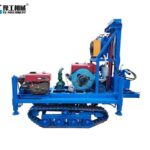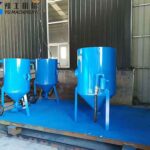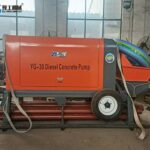Portable stone crusher is a mobile crushing plant that enables the crushing of stones and aggregates at remote or hard-to-access locations. The key advantage of these machines is their mobility and compact design, allowing them to be transported easily between different job sites, whether for construction, mining, or roadwork projects. Portable crushers come in different models depending on the types of stones or materials being processed. They are typically mounted on wheels or tracks, making them highly adaptable to changing working conditions.
Components of a Portable Stone Crusher
1. Crusher Unit: The core component responsible for the crushing process, whether it’s a jaw crusher, impact crusher, or cone crusher.
2. Feeding System: Includes hoppers, feeders, and conveyors to transport raw material into the crusher.
3. Power Source: Typically diesel or electric-powered, portable crushers are designed to work efficiently even in remote locations.
4. Transport System: The frame, wheels, or tracks that allow easy movement of the crusher from one location to another.
How Does a Mobile Stone Crusher Work?
The operation of a portable stone crusher is relatively straightforward, but its mechanics vary based on the type of crusher. Here’s a breakdown of how these crushers work:
1. Feeding
Material (stone, rock, or aggregate) is fed into the crusher’s feeding system, which usually consists of a hopper and feeder. The materials are conveyed towards the crushing unit.
2. Crushing
Once inside the crusher, the material undergoes crushing. Depending on the crusher type:
Jaw crushers use compression to break material into smaller chunks.
Impact crushers break stones using high-speed impact forces.
Cone crushers use a rotating cone to crush material between a mantle and a concave.
3. Screening
After the material has been crushed, the output is screened to separate the crushed material based on size. This is usually done using vibrating screens or similar screening mechanisms.




